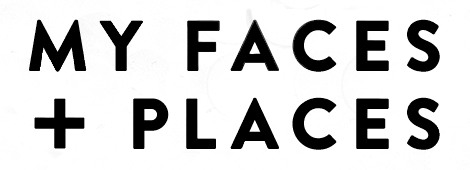The Romance Of Heidelberg (The Great Hall, Student Prison, Student Kiss, Monkey Sculpture, Neckarsonne)

The Student Kiss
I went to Heidelberg many years ago and had been smitten by this romantic city ever since. Located in the Rhine Rift Valley on the banks of the River Neckar, it is romanticism personified with a touch of fairy tale charm. Walking through this ancient town is like visiting a living museum with narrow streets of cobbled stones; splendid historical baroque buildings and a magnificent castle lording over the city perched high on Konigstuhl Hill overlooking the green valley and river. Its picture postcard charm and a chequered history set in stones in its many heritage buildings are alluring and enchanting. This travel article describes my experience in Heidelberg, the jewel of the River Neckar and a famous centre of learning in Germany with visits to the Great Hall, Student Prison, Student Kiss, Monkey Sculpture and the Neckarsonne.

The Academic City of Heidelberg taken from the Philosophers Walk which is on the hill on the other side of the river. On the bottom right is the old bridge over the River Neckar.
In The Footsteps of Scholars
Hailed as the intellectual centre of the country, Heidelberg University is the oldest and most renowned university in Germany. It was founded in 1386 by Ruprecht 1, Elector Palatine, one of rulers of the German Nation of the Rhine in the Holy Roman Empire. Today it is still an important centre of higher learning attracting students from all over the world. The campus is scattered across the city but the core is in the old university building built in 1712 and today houses the University Museum which exhibits the history of the university charting its journey through the age of romanticism and the establishment of modern natural sciences to its development in the 20th century such as its first admission to female students and its role in Nazi Germany.
The Great Hall
On the upper floor of the building is the “Great Hall”, a grand neo-Renaissance ornate hall with busts and portraits of its founders and past benefactors. The centrepiece on the front facade is the portrait of Athena, the Greek goddess of wisdom and the arts. On the ceiling are beautifully painted frescoes depicting the four faculties of the university – theology, law, medicine and philosophy. The once lecture hall is now mostly reserve as venue for ceremonial events and graduation ceremonies.

The Great Hall is the University’s historic auditorium – where academic ceremonies, concerts and special lectures are held. The Hall was renovated in 1886 to mark the University’s 500th anniversary. The University Guide is explaining to me the centrepiece portrait of Athena on the front façade.

The ceiling of the Great Hall with the painted frescoes depicting the four faculties of the university – theology, law, medicine and philosophy.
The Student Prison
As I stroll to the “Student Prison” museum round the corner, I feel like I am walking on to the set of “The Student Prince”, the renowned operetta and film by Sigmund Romberg set in Heidelberg University in 1924. Badly behaved students, mostly for causing public affray, were incarcerated in this prison between 1823 and 1914. The university exercised autonomous jurisdiction over the students for the first five hundred years until 1886 when it was curtailed and restricted to internal disciplinary measures. Imprisonment could last from two days to a month depending on the gravity of the offence though they were allowed to attend lectures during detention. Life in prison was fairly comfortable with students taking advantage to play truant and vandalising the walls with graffiti, paintings and poems. The museum preserved the cells and graffiti as they were with dusty rooms sparsely furnished with wooden and spring-based beds to showcase “a very special kind of prison life”.

An inconspicuous building in one of the lanes of Heidelberg with surprising interiors – The Student Prison.

This is the internal entrance to the Student Prison. What strikes me is that the graffiti is high up on the walls and on the ceiling and also, on the other side of the gate. Graffiti is everywhere.
A Student Kiss
A famous “institution” is “Chocolaterie Knosel” a chocolatier owned by the Knosel family since 1863. We meet the charming Miss Liselotte Knosel, the present owner who tells us the history of the company started by her great grand father Fridolin Knosel. The hand-made chocolates became very popular particularly among the young ladies of Heidelberg’s finishing school in the old days much to the delight of the university students who would gravitate towards the store in the hope of capturing the attention of the girls. But the strict governesses of the girls were always vigilant of the shenanigans between the girls and the students. Mr Knosel was sympathetic to the secret longings of these young people and came up with an ingenious idea of creating a special chocolate that he playfully called the “Student Kiss” as a romantic token for the students to give to the young ladies without incurring the wrath of the governesses. It has become the symbol of “sweetness of Heidelberg” and the chocolates comes in all shapes and sizes in lovely packaging from tin caddies, bars to heart-shaped containers. Today tourists flock to the shop to buy the “Student Kiss” as souvenirs and as we are chatting with Miss Knosel a large group of Chinese tourists descend upon the shop buying up the chocolates with gusto.

Miss Liselotte Knosel, the owner of the iconic Student Kiss. Queen Silva of Sweden visited Germany in 2015. Heidelberg, the city of her birth, presented her, the “Student Kiss Chocolates”. The iconic symbol of Heidelberg.
The Heidelberg Bridge and the Monkey sculpture
The Old Bridge was built of stone in 1786, after a succession of wooden bridges were destroyed by wars or floods.
On the city side is the medieval Heidelberg Bridge Gate which was part of the former city walls. By the Bridge Gate, is the Heidelberg Bridge Monkey sculpture who holds a mirror up to those who look at it. This bronze sculpture by Professor Gernot Rumpf was installed in 1979.
But there was a bridge monkey sculpture in Heidelberg as far back as the 15th century. Old drawings of the town show a bridge monkey sculpture next to the tower but it was destroyed during the wars in the 17th century. The legend about this bronze monkey sculpture tells us that it symbolizes the fact that neither the city-dwellers nor the people who lived outside the city were better than the other. The Monkey sculpture has a mirror for people to look at themselves.

The setting of the Heidelberg Bridge on the River Neckar. The hill on the north bank has the Philosopher’s Walk where you can get a panoramic view of the City.

The Heidelberg Bridge Gate. By one of the pillars is a tiny grey metallic image which is the bronze monkey sculpture. The ruins of the Heidelberg castle is in the background.

The head in the monkey sculpture is shaped in such a way that it can be used like a mask. The monkey is holding a mirror to reflect the person’s image to show that everybody is the same or equal.

Next to the monkey sculpture is a bronze badge with the inscription of the mocking poem of Zeiller (in German):
“Was thustu mich hie angaffen?/ Hastu nicht gesehen den alten Affen zu Heydelberg / sich dich hin und her/ Da findest du wol meines gleichen mehr.”
Neckarsonne
As I admire the riverscape along the Neckar on the Neckarsonne, “the largest solar steel ship in the world”, I am mesmerised by the loveliness of this enchanting place and realise why so many people have succumbed to its magical charm. The city’s theme song springs to mind- “I lost my heart to Heidelberg”, a song composed in 1925 by the Austrian composer Fred Raymond. Yes, I have lost my heart to Heidelberg.
This travel article describes my trip to Heidelberg, the jewel of the River Neckar and a famous centre of learning in Germany.
For information for visiting Heidelberg
Follow my blog with Bloglovin
All rights reserved © 2015-2016 MyFacesAndPlaces.co.uk








